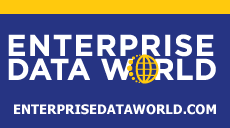
In the banking or pharmacy industry where regulations compel companies to have good governance in place, in industries such as publishing and telecom Data Governance often seems complicated and theoretical. That’s according to Sara Willovit, Product Data Governance at Becton Dickenson. Speaking at the DATAVERSITY® Enterprise Data World Conference, during her presentation titled Using Data Quality Pilot to Launch Enterprise Data Governance and Stewardship: A Real Roadmap, Willovit said that one way to ease into governance is by connecting it to something meaningful to the business, such as a challenge the business is facing, a digital transformation, or a change in leadership.
Other incentives can include tying Data Governance to the implementation of regulatory changes such as GDPR or the new privacy laws in some states, because, she said, “Reputational risk is scary to a company.” Companies working toward getting a 360-degree customer view or looking for initiatives to improve the profitability of their product portfolio are other good candidates for Data Governance programs.
Companies not motivated by a strong regulatory incentive for governance can benefit from an approach that Willovit has found works well – using a Data Quality improvement pilot program as a way of starting a Data Governance program.
Why Data Quality and Not Data Governance?
Poor Data Quality has a huge overall impact on the business. Tools for business intelligence and analytics are available but there is little value in using them without quality data, Willovit said. The desire for quality data is universal – it’s easy to understand the value of Data Quality, and it is something that everyone has experienced. “And to effectively do a Data Quality pilot, you’re going to be doing governance.”
Rather than explaining governance roles and responsibilities upfront, Willovit has participants jump into the work of cleaning up their data. As they’re working through the data cleaning process, she tells them, “Oh, by the way, that was governance that you just did.” In that way, while she’s rolling out the quality pilot program, she’s also planting the seeds for a governance program.
“You start with a pilot, but you’re thinking, ‘I’m going to expand this.’” Using this Data Quality pilot process, Willovit said that in every case she was able to get a centralized Data Governance program through the pilot, along with formalized Data Stewardship. Even when Data Stewardship was not designated as a full-time role, she was able to get stewards to the table and put a viable program in place. “It doesn’t matter how you get there. Just get there.”
Data Quality Issues: A Ticking Time Bomb
Data Quality issues are not always apparent at the surface until, suddenly, there’s an issue that causes a serious problem. Willovit recommends getting three to four different pieces in motion simultaneously throughout the pilot process so that the program will always have something moving forward when the inevitable stops and starts occur.
As for timeframe, in one case Willovit was able to complete an entire pilot in as little as six weeks.
Consider the Big and Little Gs in Governance
The grassroots ‘little g’ approach to governance starts by working with stewards to relieve their pain points around Data Quality. ‘Big G’ governance involves getting data owners onboard by ratifying standards and policies. “Hit it from both sides and just continue to do it.” Where to start will depend on the company, Willovit said.
Develop Business Rules
Willovit presented a process she used for developing governance rules where her stated purpose was improving the Data Quality of a company’s supplier master. Because there were no existing standards for “supplier master,” she took an iterative approach to developing Data Quality rules by sitting with a steward and asking what the data should look like.
“They didn’t call themselves the steward, but they knew the data, and they knew what an anomaly to the data was… Eventually they started calling themselves the steward.”
Monetize Data Value
Willovit also suggests identifying value at this stage by finding what the cost of the company’s poor-quality data is and how it impacts revenue. Knowing the value of the data helps with program funding and expansion later on.
She presented an example from a publisher that offered both physical and digital books. Because the system was configured before they offered digital books, all products added to the system required a standard physical weight. The assumption was that it was too difficult to change the weight configuration when digital books came along. The result was that all digital products were caught in suspense when they were added, requiring the efforts of multiple groups to clear them. “It just became ‘this is what we do,’” she said. When she calculated the cost of the time it took for the work around, it was about $85,000 a year. She suggests documenting these discoveries as they are revealed.
Willovit recommends continued measurement of the outcomes tied to some significant impact to the business.One company she worked with was unaware of what data assets they owned because they weren’t cataloged. Instead of using a photo they had already purchased, they would buy rights to the same photo multiple times, resulting in a loss of two million annually.
In another case, costs were being fraudulently posted to inactive vendors because there was no recognized process for determining which data was inactive or active, resulting in a loss to the company of over $222,000. “When you look at the Data Quality issue, you want to try to figure out who is impacted and how much story could be built behind this.”
A Shift in Focus
Once data is cleansed, Willovit said, “You don’t want to be in this same exact position in six months,”and that requires governance. As the pilot program moves forward, she tells data stewards, “Remember when we sat together, and we went through the Data Quality rules, and we determined what the good data was supposed to look like? That’s governance and stewardship.”
She works with the stewards on developing standards so that the data quality issues they are solving don’t recur over and over again. During this process, she shares with them that all these tasks are actually governance, and they’ve been successfully doing it throughout the pilot. It is at this point that the focus of the pilot changes to include Data Governance.
Selling the Message
Overall, the message that Willovit emphasizes is that they are already doing some Data Governance and Data Management, because without it, they would have no sensible reporting of any sort. The problem is that without a coordinated Data Governance plan, the governance is only done in silos or for one-time needs or projects. It’s not done in an integrated way, and roles are not clearly defined. So, although it is being done in some form, it can be done much better with an organized Data Governance program. By including measurements and KPI’s focused on the goals of the business as a whole – not just one particular project – “Usually that sell gets you places,” she said.
Data Issue Management Encourages Engagement
In the process of working through the Data Quality pilot, issues will arise that can’t be fixed in the moment. These can be data issues that are not just Data Quality problems, “But many Data Quality problems become data issues.” As these are discovered, Willovit introduces the concept of a data issue log and a change control process. “Because you don’t want to just make these changes in production and start impacting all your downstream consumers.” Once there’s a process in place for solving data issues, participation increases, because people start to realize that if they bring problems to a Data Quality meeting, their issues will get logged and solved.
Expanding the Program
At this point in the process, Willovit is actively expanding the governance program. She has a strategy in place, and her message is that governance and stewardship are essential to ensuring good BI/Analytics.
“They’ve got great tools out there that make these really cool whizzy charts, but again, without that underlying data being sound, you’re actually misinforming in many cases.”
Oftentimes Willovit says she doesn’t have a lot of funding for technology, but as awareness of the program’s successes grows, she is able to make the pitch for additional resources to further expand the program. “Here’s where I tie it to the key performances or key initiatives of the business,” whether that’s digital transformation, or achieving a digital ‘first,’ or trying to get more accurate reporting. She illustrates the advantages of a proactive root cause analysis, rather than a ‘find and fix’ approach, finishing with: “And to do that, by the way, it’d be great if we could have tools.”
Governance & Stewardship Roles
Willovit said that the stewards are the ‘tactical folks’ that are on the ground doing the day-to-day work, and that she cannot stress enough how important they are to the success of the program. Although it’s possible to go from the ground up and locate stewards in the company, she said a better choice is to work with data owners because she can ask them to assign a steward to the project. “That means that they’re giving that person the time to do this work, and hopefully it’ll be part of their job description.”
Communicate, Communicate, Communicate
A key part of the success of the process involves internal marketing. She recommends regularly broadcasting program successes to senior leadership. When leadership praises the program, she gives all the credit to the stewards: “They’re the ones doing the heavy lifting here.”
Check out Enterprise Data World at www.enterprisedataworld.com
Here is the video of the Enterprise Data World Presentation:
Image used under license from Shutterstock.com

